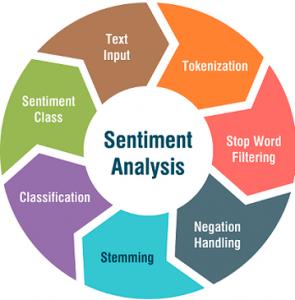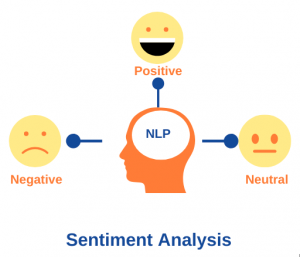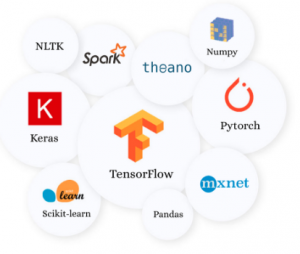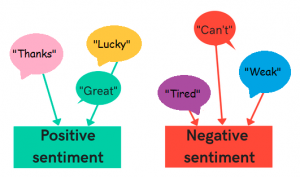In the vast realm of human communication, sentiments serve as the heartbeat, conveying the intricate nuances of emotions and opinions. Sentiment analysis, a captivating field within the domain of natural language processing (NLP), emerges as a powerful tool to decode the sentiments embedded in textual data. This article embarks on a comprehensive exploration of sentiment analysis, unraveling its definition, applications, and the role of NLP in deciphering the language of emotions.
What Do You Mean by Sentiment Analysis?
Sentiment analysis, often referred to as opinion mining, is the process of using computational methods to extract and analyze sentiments, opinions, and emotions from written or spoken language. It delves into understanding the polarity of the expressed sentiments, categorizing them as positive, negative, or neutral. At its essence, sentiment analysis bridges the gap between human communication and the digital world, providing insights into the collective emotional pulse of a vast audience.
As Steve Jobs once remarked, “You’ve got to start with the customer experience and work backward to the technology.” Sentiment analysis aligns with this philosophy, placing the user experience at the forefront by deciphering the sentiments expressed in customer feedback, reviews, and social media interactions.

What Is an Example of Sentiment Analysis?
Imagine a scenario where a company launches a new product, and customers flood various online platforms with their opinions. Sentiment analysis can sift through this sea of comments, discerning whether the general sentiment is one of excitement, dissatisfaction, or perhaps a mix of both. For instance, a social media post praising the sleek design of a smartphone contributes to the positive sentiment, while a comment expressing frustration with a product feature adds to the negative sentiment.
In the real world, companies like Amazon and Netflix leverage sentiment analysis to gauge customer reactions to products and content. This insightful understanding allows them to adapt and tailor their offerings to better align with consumer preferences.
How Is NLP Used in Sentiment Analysis?
Natural Language Processing, a branch of artificial intelligence, plays a pivotal role in advancing sentiment analysis. NLP techniques empower computers to comprehend, interpret, and generate human language, making them adept at discerning the subtleties of sentiments expressed in text. Machine learning models, a subset of NLP, are trained on vast datasets to recognize patterns and context within language, enabling them to categorize accurately.
To quote Ray Kurzweil, “Language is the most important interface we have.” NLP transforms this interface into a bridge of understanding, allowing machines to navigate the intricate terrain of human expression and sentiment.

Can ChatGPT Do Sentiment Analysis?
ChatGPT, a revolutionary language model, is primarily designed for natural language understanding and generation. While it excels in generating human-like text and engaging in conversations, its capabilities are not explicitly geared toward sentiment analysis. Sentiment analysis typically involves specialized models trained on sentiment-labeled datasets. While ChatGPT can understand and respond to sentiments expressed in the text during a conversation, for in-depth sentiment analysis tasks, dedicated sentiment analysis models might be more suitable.
As technology advances, the integration of sentiment-aware capabilities into language models could pave the way for more nuanced and context-aware interactions.
What Is the Main Purpose of Sentiment Analysis?
The overarching purpose of sentiment analysis is to distill valuable insights from the sea of unstructured textual data that inundates the digital landscape. By discerning sentiments, organizations can gain a profound understanding of customer experiences, public opinions, and market trends. This, in turn, informs strategic decision-making, helping businesses enhance products, tailor marketing strategies, and foster a more positive brand image.
In the words of Bill Gates, “Your most unhappy customers are your greatest source of learning.” Sentiment analysis positions businesses to turn criticism into constructive action, fostering a continuous cycle of improvement and customer satisfaction.
Sentiment Analysis in Python
Python, with its rich ecosystem of libraries and tools, has become a preferred language for sentiment analysis implementations. Libraries like NLTK (Natural Language Toolkit) and spaCy offer robust NLP capabilities, simplifying the process of text processing and sentiment classification. The ease of integration with machine learning frameworks like scikit-learn and TensorFlow makes Python an accessible choice for developing sentiment analysis applications.
Code, in the language of Python, becomes the orchestrator, transforming unstructured text into actionable insights. As Python enthusiasts often say, “Readability counts,” and sentiment analysis in Python embodies this principle, providing both power and readability in the hands of developers.

Sentiment Analysis Tool
The demand for effective sentiment analysis tools has surged with the exponential growth of online content. Numerous tools and platforms, both open-source and commercial, offer sentiment analysis capabilities. Tools like VADER (Valence Aware Dictionary and sentiment Reasoner) and TextBlob provide pre-trained models for sentiment analysis, allowing users to quickly assess sentiments in their text data.
The choice of a sentiment analysis tool depends on factors such as the specific use case, the scale of data, and the desired level of customization. In a world inundated with data, these tools serve as beacons, illuminating the emotional landscapes hidden within the vast textual oceans.
Sentiment Analysis in Machine Learning
Sentiment analysis, deeply intertwined with machine learning, thrives on the ability of models to generalize patterns from data. Supervised learning models, trained on labeled datasets, learn to recognize the features indicative of positive, negative, or neutral sentiments. Unsupervised learning techniques, on the other hand, discover sentiment patterns without labeled training data, making them adaptable to diverse contexts.
Machine learning algorithms become the silent interpreters of human expression, deciphering sentiments with a precision that continues to evolve with each iteration. As Arthur C. Clarke envisioned, “Any sufficiently advanced technology is indistinguishable from magic.” In sentiment analysis, the magic lies in the algorithms’ ability to comprehend and reflect the complexities of human emotions.
Sentiment Analysis Example
Consider a social media platform where users share their experiences with a newly released movie. A sentiment analysis example would involve the algorithm scanning through these posts, identifying keywords, and determining the overall sentiment expressed. Positive phrases like “captivating plot” or “stellar performances” contribute to a positive sentiment, while negative expressions such as “disappointing ending” or “poor cinematography” contribute to a negative sentiment.
This real-world application of sentiment analysis showcases its versatility in distilling actionable insights from diverse forms of user-generated content.

Sentiment Analysis Online
The ubiquity of online communication has propelled sentiment analysis into the digital forefront. Online platforms, from social media to e-commerce websites, leverage sentiment analysis to monitor brand perception, analyze user feedback, and tailor user experiences. This real-time analysis empowers businesses to respond swiftly to emerging trends, address concerns promptly, and foster a dynamic and engaging online presence.
In the age of instantaneous communication, sentiment analysis online becomes the compass guiding organizations through the ever-shifting currents of public opinion.
Conclusion: The Language of Sentiments Unveiled
As we navigate the labyrinth of sentiment analysis, it becomes evident that this field is not merely about algorithms and data. It’s about understanding the heartbeat of human expression, decoding the language of sentiments that shapes our digital interactions. From Python scripts to sophisticated machine learning models, sentiment analysis stands as a testament to our quest to imbue technology with the ability to understand the intricacies of our emotions.
To quote Rudyard Kipling, “Words are, of course, the most powerful drug used by mankind.” Sentiment analysis harnesses the power of words, offering a lens through which we can perceive, comprehend, and respond to the collective emotions that define our digital landscape. In this symbiotic relationship between human expression and technological interpretation, sentiment analysis emerges as a dynamic force, continuously evolving to capture the ever-changing nuances of our shared experiences.